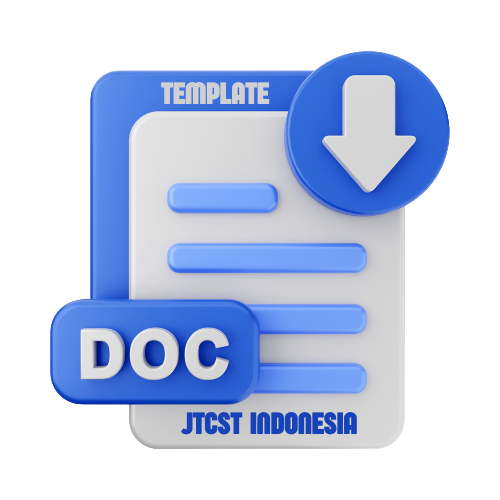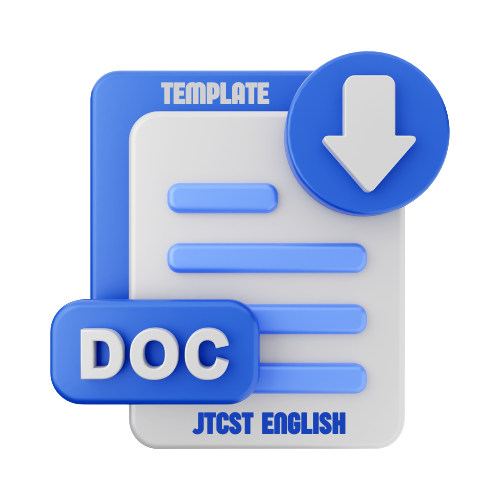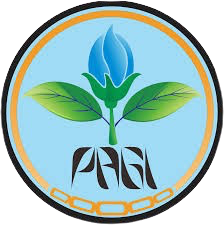The Inoculation Effect of Arbuscular Mycorrhizal Fungi (AMF) and Phosphate Fertilization to Increase Cherry Tomato Production
DOI:
https://doi.org/10.22219/jtcst.v2i1.11247Keywords:
CMA, G. etunicatum, G. fasciculatum, P fertilizerAbstract
One of phosphate (P) fertilizer i.e. SP-36 is expensive and can be obtained by rock phosphate (RP). Rock phosphate combined with Vesicular Arbuscular Mycorrhizal fungus (VAM) could increase Pavailability. VAM consists of many species, so it is necessary to test the role of VAM species on cherry tomato plant. This study aims to examine the effect of VAM species and phosphate fertilization to improve cherry tomato production. The research use a Completely Randomized Design (CRD) which consisted of two factors with three replications. The first factor is the phosphate fertilization (P0= without P fertilizer, P1= SP-36, P2= rock phosphate) and the second factor is VAM species (M0= control without mycorrhizae, M1= Glomus etunicatum, M2= Glomus fasciculatum, M3= double inoculation of G. etunicatum and G. fasciculatum). The results show that mycorrhizae inoculation increases plant height, fruit number, fruit weight and accelerates flowering age compared to without inoculation. BP fertilization increases fruit weight. BP+CMA produces number of fruit equivalent to SP-36+CMA. BP+G. etunicatum treatment significantly increases fruit weight compared to SP-36+G. etunicatum. G. etunicatum inoculation gives the highest fruit weight compared to other inoculation.
Downloads
References
[Dirjen Hortikultura] Direktorat Jenderal Holtikultura. 2015. Statistik produksi hortikultura tahun 2014. Internet] [diunduh 2019 Februari 9] tersedia pada www.hortikultura.pertanian.go.id.
[Kementan] Kementerian Pertanian. 2012. Daftar keputusan Menteri Pertanian. Internet] [diunduh 2019 Februari 9] tersedia pada www.deptan.go.id.
[Pusdatin] Pusat Data dan Sistem Informasi Pertanian. 2014. Outlook komoditi tomat. Internet] [diunduh 2019 Februari 9] tersedia pada www.epublikasi.setjen.pertanian.go.id.
Budi, S. W., S. I. Purwanti, dan M. Turjaman. (2015). Fungi mikoriza arbuskula dan arang tempurung kelapa mempercepat pertumbuhan awal bibit Calliandra calothyrus Meissn di media tanah marginal. Jurnal Silvikultur Tropika, 6 (2), 114 – 118.
Chandel, S. S., B. K. Singh, A. K. Singh, D. P. Moharana, A. Kumari dan A. Kumar. (2017). Response of various mycorrhizal strains on tomato (Solanum lycopersicum L.) cv. Arka Vikas in relation to growth, yield, and quality attributes. Journal of Pharmacognosy and Phytochemistry, 6 (6), 2381 – 2384.
Cofcewicz, E. T., Carlos A. B. M., Carneiro, Regina M. D. G. dan Carlos R. P. (2001). Interaction of arbuscular mycorrhizal fungi Glomus etunicatum and Gigaspora margarita and root-knot nematode Meloidogyne javanica in tomato. Fitopatologia Brasileira, 26 (1), 65 – 70.
Dhaniaputri, R. dan H. Irawati. (2018). Pertumbuhan organ vegetatif tomat merah (Lycopersicum esculentum, L. var commune) dan tomat ungu (Lycopersicum esculentum, L. var indigo rose). Jurnal Bioeduscience, 2 (1), 88 – 95.
Gunadi, N. dan Subhan. (2007). Respons tanaman tomat terhadap penggunaan jamur mikoriza di lahan marjinal. Jurnal Hortikultura, 17 (2), 138 – 149.
Hadianur, H., S. Syafruddin dan E. Kesumawati. (2016). Pengaruh jenis fungi mikoriza arbuscular terhadap pertumbuhan dan hasil tanaman tomat (Lycopersicum esculentum Mill). Jurnal Agrista, 20 (3), 126 – 134.
Hamida, R. dan K. Dewi. (2015). Efektivitas mikoriza vesikular arbuskular dan 5-aminolevulinic acid terhadap pertumbuhan jagung Varietas Lokal Madura pada cekaman kekeringan. Penelitian Pertanian Tanaman Pangan, 34 (1), 61 – 67.
Jamilah, M., Purnomowati dan U. Dwiputranto. (2016). Pertumbuhan cabai merah (Capsicum annuum L.) pada tanah masam yang diinokulasi mikoriza vesikular arbuskular (MVA) campuran dan pupuk fosfat. Jurnal Biosfera, 33 (1), 37 – 45.
Kuswandi, P. C. dan L. Sugiyarto. (2015). Aplikasi mikoriza pada media tanam dua varietas tomat untuk peningkatan produktivitas tanaman sayur pada kondisi cekaman kekeringan. Jurnal Sains Dasar, 4 (1), 17 – 22.
Lestariana, D. S. dan M. P. Aulia. (2020). Respon kedelai hitam (Glycine max (L) merril) dengan inokulasi mikoriza pada berbagai taraf pemupukan anorganik di tanah regosol Boyolali. Jurnal Agriovet, 2 (1), 17 – 42.
Maimunah, G. Rusmayadi dan B. F. Langai. (2018). Pertumbuhan dan hasil dua varietas tanaman kedelai (Glycine max (L.) Merril) di bawah kondisi cekaman kekeringan pada berbagai stadia tumbuh. EnviroScienteae, 14 (3), 211 – 221.
Meylia, R. D. dan K. Koesriharti. (2018). Pengaruh pemberian pupuk fosfor dan sumber kalium yang berbeda terhadap pertumbuhan dan hasil tanaman tomat (Lycopersicon esculentum Mill.). Jurnal Produksi Tanaman, 6 (8), 1934 – 1941.
Neliyati. (2012). Pertumbuhan Hasil tanaman tomat pada beberapa dosis kompos sampah kota. Jurnal Agronomi, 10 (2), 93 – 97.
Nzanza, B., D. Marais dan P. Soundy. (2011). Tomato (Solanum lycopersicum L.) seedling growth and development as influenced by Trichoderma harzianum and arbuscular mycorrhizal fungi. African Journal of Microbiology Research, 5 (4), 425 – 431.
Ortas, I. (2010). Effect of mycorrhiza application on plant growth and nutrient uptake in cucumber production under field conditions. Spanish Journal of Agricultural Research, 8 (1), 116 – 122.
Ortas, I., N. Sari, C. Akpinar, C. dan H. Yetisir. (2013). Selection of arbuscular mycorrhizal fungi species for tomato seedling growth, mycorrhizal dependency and nutrient uptake. European Journal of Horticultural Science, 78 (5), 209 – 218.
Pereira, J. A. P., I. J. C. Vieira, M. S. M. Freitas, C. L. Prins, M. A. Martins dan R. Rodrigues. (2015). Effects of arbuscular mycorrhizal fungi on Capsicum spp. Journal of Agricultural Science, 154, 828 – 849.
Permatasari A. D. dan T. Nurhidayati. (2014). Pengaruh inokulasi bakteri penambat nitrogen, bakteri pelarut fosfat dan mikoriza asal Desa Condro, Lumajang, Jawa Timur terhadap pertumbuhan cabai rawit. Jurnal Sains dan Seni POMITS, 3 (2), 44 – 48.
Rengganis, R. D., Y. Hasanah, dan N. Rahmawati. (2014). Peran fungi mikoriza arbuskula dan pupuk rock fosfat terhadap pertumbuhan dan produksi kedelai (Glycine max (L.) Merrill). Jurnal Online Agroekoteknologi, 2 (3), 1087 – 1093.
Ridwan, I. (2011). Pembuatan pupuk super fosfat dengan variasi diameter partikel batuan fosfat dan variasi konsentrasi asam sulfat. Jurnal Fluida, 7 (1), 36 – 40.
Rizvi, R., J. Iqbal, I. Mahmood dan R. A. Ansari. (2015). Comparative efficacy of different arbuscular-mycorrhizal fungal spp. (AMF) on tomato (Lycopersicon esculentum Mill.). e-Journal of Science and Technology, 10 (1), 13 – 26.
Rokhminarsi, E., H. Hartati, dan S. Suwandi, S. (2007). Pertumbuhan dan hasil tomat ceri pada pemberian pupuk hayati mikoriza, azolla serta pengurangan pupuk N dan P. J. Penelitian dan Informasi Pertanian, 11 (2), 92 – 102.
Salvioli, A., I. Zouari, M. Chalot dan P. Bonfante. (2012). The arbuscular mycorrhizal status has an impact on the transcriptome profile and amino acid composition of tomato fruit. BMC Plant Biology, 12 (1), 1 – 12.
Volpe, V., W. Chitarra, P. Cascone, M. G.Volpe, P. Bartolini, G. Moneti, G. Pieraccini, C. D. Serio, B. Maserti, E. Guerrieri dan R. Balestrini. (2018). The association with two different arbuscular mycorrhizal fungi differently affects the water stress tolerance in tomato. Frontiers in plant science, 9, 1 – 16.
Wahyuni, S., R. Linda dan S. Khotimah. (2013). Pengaruh inokulum jamur glomus aggregatum dan pupuk fosfat SP-36 terhadap pertumbuhan tanaman tomat (Lycopersicum esculentum, Mill.) pada tanah gambut. Jurnal Protobiont, 2 (3), 152 – 156.
Winata, N. A. S. H., D. R. Lukiwati dan E. D. Purbajanti. (2014). Kualitas biji sorgum manis varietas numbu dengan pemberian pupuk sumber fosfat yang berbeda. Agrivigor, 7 (1), 63 – 69.
Yelianti, U., Kasli, M. Kasium dan E. F. Husin. (2009). Biodiversity of arbuskular mycorrhiza fungi (AMF) on potatoes rhizosphere and it potential as biofertilizer. Jurnal Sainstek, 12 (1), 59 – 64.
Yudha, B. P. K., B. Hermiyanto, R. Soedradjad. (2014). Pengaruh inokulasi jamur mikoriza arbuskula dan aplikasi batuan fosfat terhadap pertumbuhan padi gogo. Jurnal Berkala Ilmiah Pertanian,1 (1), 1 – 5.
Downloads
Published
How to Cite
Issue
Section
License
Copyright (c) 2020 Cahyani et al.

This work is licensed under a Creative Commons Attribution-ShareAlike 4.0 International License.
Authors who publish with this journal agree to the following terms:
- Authors retain copyright and grant the journal right of first publication with the work simultaneously licensed under a Creative Commons Attribution License that allows others to share the work with an acknowledgement of the work's authorship and initial publication in this journal.
- Authors are able to enter into separate, additional contractual arrangements for the non-exclusive distribution of the journal's published version of the work (e.g., post it to an institutional repository or publish it in a book), with an acknowledgement of its initial publication in this journal.
- Authors are permitted and encouraged to post their work online (e.g., in institutional repositories or on their website) prior to and during the submission process, as it can lead to productive exchanges, as well as earlier and greater citation of published work (See The Effect of Open Access).











